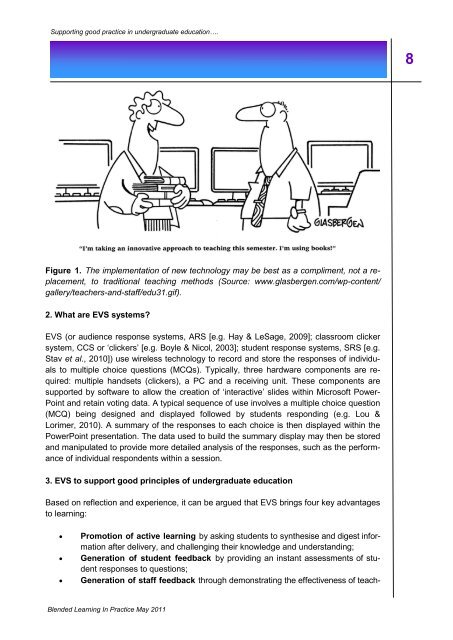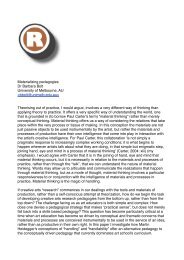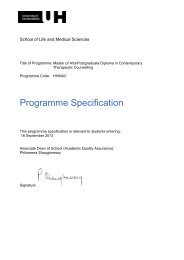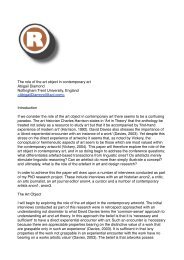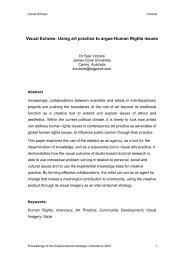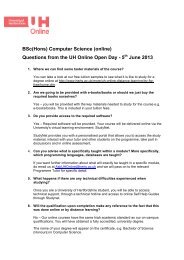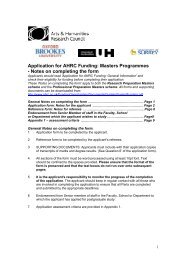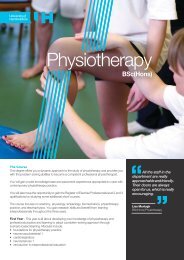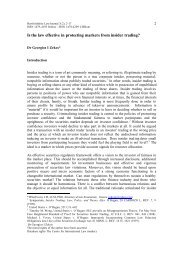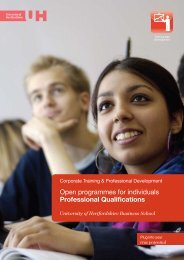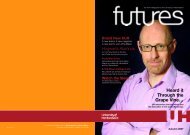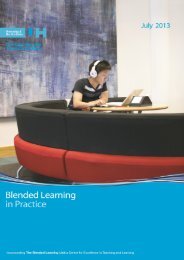3 - University of Hertfordshire
3 - University of Hertfordshire
3 - University of Hertfordshire
You also want an ePaper? Increase the reach of your titles
YUMPU automatically turns print PDFs into web optimized ePapers that Google loves.
Supporting good practice in undergraduate education….8Figure 1. The implementation <strong>of</strong> new technology may be best as a compliment, not a replacement,to traditional teaching methods (Source: www.glasbergen.com/wp-content/gallery/teachers-and-staff/edu31.gif).2. What are EVS systems?EVS (or audience response systems, ARS [e.g. Hay & LeSage, 2009]; classroom clickersystem, CCS or „clickers‟ [e.g. Boyle & Nicol, 2003]; student response systems, SRS [e.g.Stav et al., 2010]) use wireless technology to record and store the responses <strong>of</strong> individualsto multiple choice questions (MCQs). Typically, three hardware components are required:multiple handsets (clickers), a PC and a receiving unit. These components aresupported by s<strong>of</strong>tware to allow the creation <strong>of</strong> „interactive‟ slides within Micros<strong>of</strong>t Power-Point and retain voting data. A typical sequence <strong>of</strong> use involves a multiple choice question(MCQ) being designed and displayed followed by students responding (e.g. Lou &Lorimer, 2010). A summary <strong>of</strong> the responses to each choice is then displayed within thePowerPoint presentation. The data used to build the summary display may then be storedand manipulated to provide more detailed analysis <strong>of</strong> the responses, such as the performance<strong>of</strong> individual respondents within a session.3. EVS to support good principles <strong>of</strong> undergraduate educationBased on reflection and experience, it can be argued that EVS brings four key advantagesto learning:Promotion <strong>of</strong> active learning by asking students to synthesise and digest informationafter delivery, and challenging their knowledge and understanding;Generation <strong>of</strong> student feedback by providing an instant assessments <strong>of</strong> studentresponses to questions;Generation <strong>of</strong> staff feedback through demonstrating the effectiveness <strong>of</strong> teach-Blended Learning In Practice May 2011


